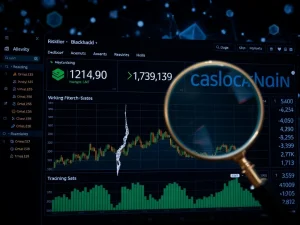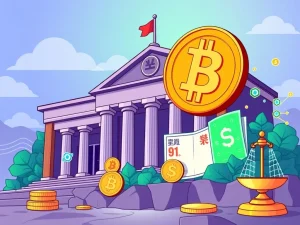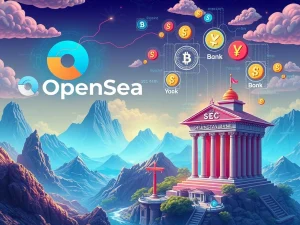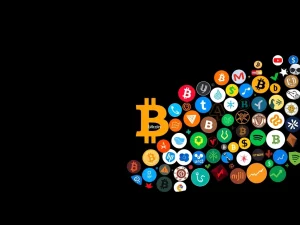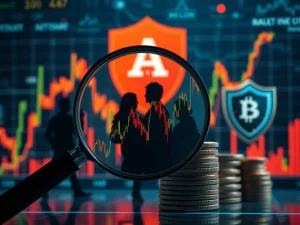Revolutionizing EV Charging: U Power and IoTeX Tokenize Network for Unprecedented Growth
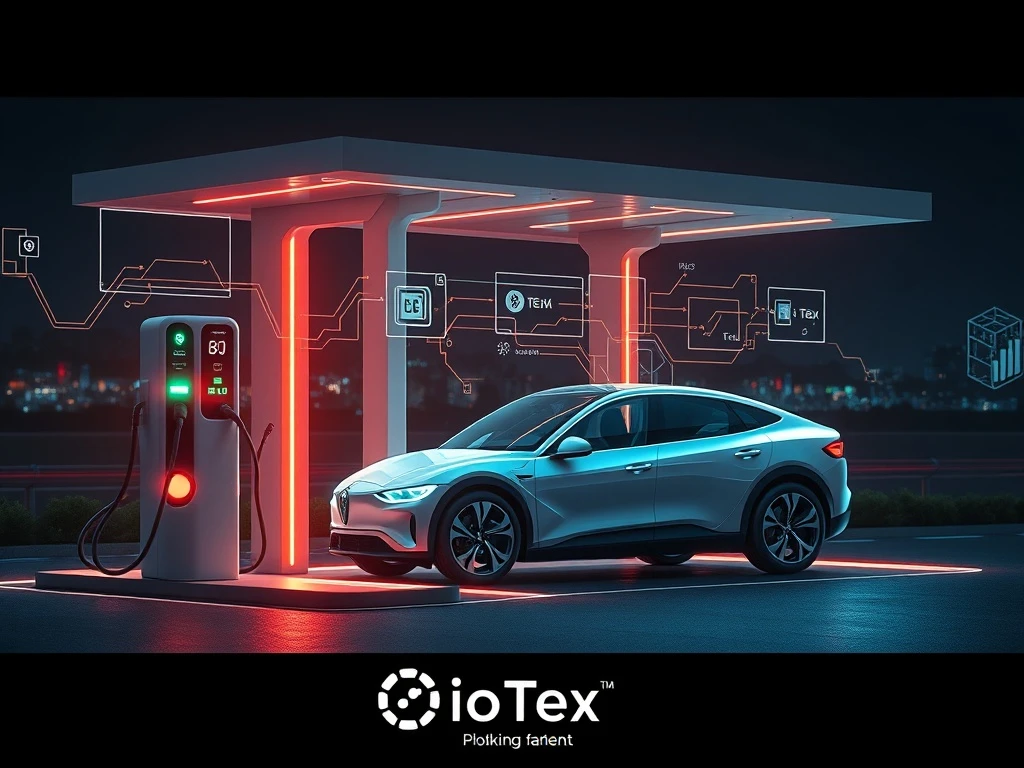
The world of electric vehicles (EVs) is rapidly evolving, and with it, the demand for robust and efficient charging infrastructure. Imagine an EV charging network that isn’t just powered by electricity, but by cutting-edge blockchain technology, enhancing everything from liquidity to operational transparency. This is precisely what U Power, a prominent China-based electric vehicle company, is set to achieve through its groundbreaking collaboration with the decentralized blockchain platform, IoTeX.
What Does the IoTeX Partnership Mean for EV Charging?
U Power Limited (Nasdaq: UCAR) has solidified a strategic Memorandum of Understanding (MoU) and Business Cooperation Agreement with IoTeX. This isn’t merely another tech alliance; it’s a pivotal move to digitize and manage physical assets within U Power’s extensive network of over 10,000 battery-swapping and charging stations across China and Southeast Asia. The core idea behind this IoTeX partnership is to leverage decentralized infrastructure to convert real-world assets (RWAs) into digital tokens.
- Enhanced Liquidity: Tokenizing physical infrastructure means making these assets more easily tradable and accessible to a wider range of investors, breaking down traditional barriers to entry.
- Operational Transparency: Blockchain’s immutable ledger provides clear, verifiable records of asset performance and usage, significantly reducing information asymmetry.
- Improved Capital Access: New, innovative funding mechanisms can be unlocked, potentially attracting fresh and diverse investment streams into the rapidly expanding EV sector.
This collaboration aims to seamlessly integrate U Power’s AI-powered battery-swapping technology with IoTeX’s decentralized IoT infrastructure, enabling real-time tracking and management of assets with unprecedented precision.
The Transformative Power of Asset Tokenization in the EV Sector
Asset tokenization is the process of converting rights to an asset into a digital token on a blockchain. For U Power, this means transforming their physical EV infrastructure – individual charging stations, battery packs, and even entire networks – into digital, verifiable tokens. This approach promises to redefine ownership and investment in the energy sector.
Why is this particularly significant for the EV sector?
- Fractional Ownership: Smaller investors can own a “piece” of a charging station or battery asset, lowering financial entry barriers and democratizing investment opportunities.
- Novel Funding Mechanisms: Beyond traditional debt or equity, U Power could raise capital by selling tokens representing future revenue streams or direct, fractional ownership of physical assets.
- Global Accessibility: Blockchain-based assets can be traded globally, opening up new markets for investment and liquidity that were previously inaccessible.
The initiative also explores establishing a crypto treasury reserve using IoTeX’s native IOTX token, which currently trades around $0.02401. This indicates a long-term strategic commitment to integrating blockchain economics directly into their core business model.
How U Power is Pioneering Blockchain Technology in Transportation
U Power isn’t just adopting blockchain technology; it’s aiming to set a new industry standard for integrating Web3 innovations into physical infrastructure. By merging traditional energy solutions with decentralized technologies, the company seeks to create a standardized, transparent model for EV providers globally. The decentralized IoT network provided by IoTeX serves as the robust technical backbone, ensuring secure, auditable, and real-time data flows directly from physical assets.
This hybrid approach effectively tackles scalability challenges inherent in large-scale EV infrastructure by:
- Secure Data Collection: IoT sensors on charging stations feed verified data directly to the blockchain, ensuring data integrity from the source.
- Verifiable Information: All data points are timestamped and immutable on the blockchain, significantly reducing fraud and enhancing trust across the ecosystem.
- Real-time Management: Operators gain unprecedented, instantaneous insights into asset performance and utilization, enabling proactive maintenance and optimization.
Vicente López-Ibor Mayor, a U Power board member, emphasized the immense potential for “digitizing and tokenizing infrastructure assets at scale,” highlighting the dual benefits of improved operational efficiency and attracting entirely new capital streams.
Navigating the Road Ahead: Challenges and Opportunities
While the vision is undoubtedly ambitious and forward-thinking, the project remains in an exploratory phase. Analysts point out several critical factors that will determine its long-term success:
- Lack of Disclosed Metrics: Specific projections on projected cost savings or return on investment have not yet been released, making it difficult to quantify immediate financial impact.
- Technical Interoperability: Ensuring seamless communication and data exchange between diverse IoT sensors and complex blockchain protocols presents a significant technical challenge requiring iterative development.
- Regulatory Clarity: The tokenization of physical assets is still an emerging concept, and regulatory frameworks are continually evolving in many jurisdictions, particularly in key markets like China and Southeast Asia.
- Market Demand: Widespread adoption and sustained success will ultimately depend on how the broader market perceives and values these new RWA tokens.
Despite these inherent hurdles, this pioneering partnership could establish a significant precedent for integrating Web3 innovations into large-scale physical infrastructure, potentially paving the way for other industries to follow suit in the coming years.
Conclusion
The collaboration between U Power and IoTeX represents a bold leap forward in merging the physical world of EV infrastructure with the dynamic digital realm of blockchain. By embracing asset tokenization, U Power is not only seeking to boost liquidity and transparency but also to fundamentally redefine how capital is accessed, managed, and invested within the energy sector. While challenges remain on the path to full realization, the potential for this pioneering IoTeX partnership to truly revolutionize EV charging and set a new benchmark for the application of blockchain technology in real-world infrastructure is undeniable. This is a fascinating space to watch closely as it unfolds and potentially reshapes the future of sustainable transportation.
Frequently Asked Questions (FAQs)
Q1: What is the primary goal of the U Power-IoTeX partnership?
A1: The main goal is to tokenize U Power’s extensive EV battery-swapping and charging network, converting physical infrastructure into real-world asset (RWA) tokens. This aims to significantly enhance liquidity, operational transparency, and access to capital for U Power’s expanding network across China and Southeast Asia.
Q2: How does asset tokenization benefit the EV charging network?
A2: Asset tokenization can unlock novel funding mechanisms, enable fractional ownership of infrastructure for smaller investors, and dramatically improve operational efficiency through real-time, verifiable data tracking on the blockchain. It democratizes investment and streamlines asset management.
Q3: What role does IoTeX play in this collaboration?
A3: IoTeX provides the decentralized IoT infrastructure and blockchain platform. This allows for the secure collection and verification of data from U Power’s physical assets, serving as the technical backbone for the tokenization process and ensuring auditable and transparent data flows.
Q4: What are some potential challenges for this project?
A4: Key challenges include the exploratory nature of the project (with no disclosed ROI metrics yet), technical complexities like ensuring interoperability between diverse IoT sensors and blockchain protocols, and navigating the evolving regulatory landscape for asset tokenization, especially in key markets like China and Southeast Asia.
Q5: Is U Power planning to use cryptocurrencies in its operations?
A5: Yes, U Power plans to explore establishing a crypto treasury reserve using IoTeX’s native IOTX token. This indicates a deeper, long-term integration of blockchain economics and digital assets into their business model.

